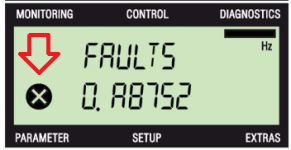I_Automation
Lifetime Supporting Member
I had to get an old shot blast cabinet working that had a jet wheel and a turntable inside.
At first I wondered why the jet wheel had a reversing contactor, and a couple of timers connected to it.
Turns out when you stop the motor it timed 1/4 second then plugged the motor (still going full speed) in reverse for 3/4 second. You could hear that out in the parking lot and see the entire machine jump. Not something a controls engineer would design on purpose in my mind. Plus it still took a couple minutes for the wheel to stop.
When I work on presses I now make sure the anti-plugging system works properly.
At first I wondered why the jet wheel had a reversing contactor, and a couple of timers connected to it.
Turns out when you stop the motor it timed 1/4 second then plugged the motor (still going full speed) in reverse for 3/4 second. You could hear that out in the parking lot and see the entire machine jump. Not something a controls engineer would design on purpose in my mind. Plus it still took a couple minutes for the wheel to stop.
When I work on presses I now make sure the anti-plugging system works properly.





